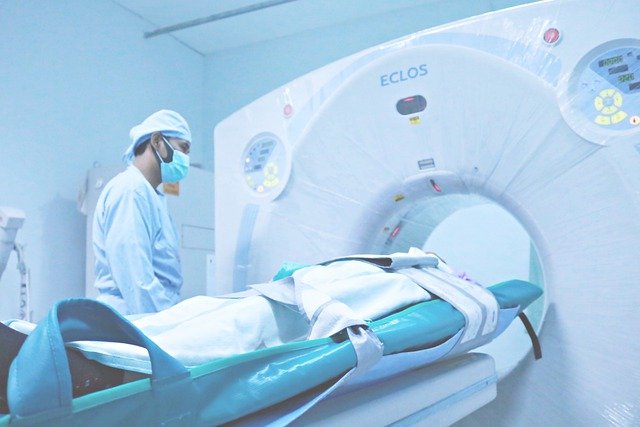Special to 1808Delaware
In treating cancers of the brain, millimeters matter. A new radiation therapy program at the OhioHealth Delaware Medical Campus gives patients access to a sophisticated treatment with pinpoint accuracy, allowing higher doses with fewer side effects.
Known as stereotactic radiosurgery, the noninvasive therapy is being used in patients with cancer that has spread to the brain from other parts of the body. Not surgery in the traditional sense, stereotactic treatment aims radiation precisely at tumor sites, sparing nearby tissue. The therapy also is used to treat benign lesions.
By using the targeted treatment, specialists can safely administer higher doses of radiation in a much shorter time frame than is possible with traditional radiation therapy, which can take 10 to 30 sessions. Stereotactic therapy typically takes only one to three visits and produces fewer side effects such as memory loss, confusion and prolonged fatigue. This is especially important in older patients and those who already have been through multiple cancer treatments.
 “This has a huge impact on the quality of life for a patient,” said Andrew Freeman, MD, system chief of radiation oncology at OhioHealth. “This will be a tremendous benefit to our patients in Delaware and farther north because these patients would have had to travel, or may have not been given the option and be treated with just a more traditional course of whole brain radiation,” he said. Until recently, stereotactic radiosurgery was available within OhioHealth at OhioHealth Riverside Methodist Hospital in Columbus.
“This has a huge impact on the quality of life for a patient,” said Andrew Freeman, MD, system chief of radiation oncology at OhioHealth. “This will be a tremendous benefit to our patients in Delaware and farther north because these patients would have had to travel, or may have not been given the option and be treated with just a more traditional course of whole brain radiation,” he said. Until recently, stereotactic radiosurgery was available within OhioHealth at OhioHealth Riverside Methodist Hospital in Columbus.
During treatment, patients wear a customized, tight-fitting mask over the face and head while radiation oncologists in an adjacent room use specialized equipment to focus multiple beams of radiation on the tumor. Each beam has little effect on the tissue it passes through, but a targeted dose is delivered to the site where the beams intersect.
OhioHealth radiation oncologists use a linear accelerator that can roll and pitch in six dimensions to deliver radiation with submillimeter accuracy. High-resolution imaging equipment captures visual data in real time to correct for even the smallest movement and ensure precision dosing.
Patients can expect a treatment to last 15 minutes to an hour and be completely non-invasive with this newest technology. Historically, this may have required the patient to be bolted to the table with treatment durations lasting several hours.
Freeman says offering new programs like stereotactic radiosurgery outside Columbus can eliminate roadblocks that keep patients from receiving optimal care.
“We’re dedicated to bringing services where they need to be,” he said. “Having this service available at our Delaware campus will give patients and their physicians more treatment options and keep them close to home.”










